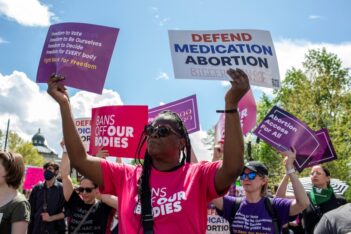
Agencies underestimate the value of human life by consistently ignoring health inflation and wealth inflation.
As Congress considers whether to codify cost-benefit analysis (CBA) requirements, federal agencies and observers of the regulatory process should recognize that existing CBA procedures systematically undervalue the benefits of regulation, causing widespread underregulation of environmental harms and other health hazards.
Federal agencies consistently undervalue the benefit of saving human lives in the future by failing to account for “health inflation,” the rate at which health care costs rise more quickly than prices of normal goods and services, and “wealth inflation,” the phenomenon by which residents of wealthy countries tend to get richer over time. The resulting undervaluation causes the agencies to underestimate the likely benefits of regulations, thereby causing agencies to forgo enacting some lifesaving policies.
Before enacting major regulations, federal agencies must produce a regulatory impact analysis listing the costs and benefits of proposed rules. The valuation agencies give to human lives is important in its own right, but it is all the more important because too often this valuation is the only basis for estimating the overall benefits of a new regulation. Despite protestations to the contrary, agencies regularly ignore certain kinds of non-economic benefits. Indeed, even many economic benefits are ignored, with agencies calculating only the value of saved lives – but not, for example, always including the value of preventing non-fatal illnesses or injuries.
A recent meat labeling rule issued by the Food Safety and Inspection Service (FSIS) of the U.S. Department of Agriculture is a good example. The point of the rule is to give meat eaters more information about the food they consume, allowing them to make healthier choices. As one might expect, the anticipated benefits come in the form of better health for American carnivores. But the agency excluded the benefits of preventing non-fatal cancers. FSIS stated that, “[g]iven questions concerning data quality and unsettled methodological issues in estimating the benefits of a reduction in non-fatal cases of coronary heart disease,” it would limit “its analysis of benefits to reductions in premature death.”
Rounding real economic benefits (other than prevented fatalities and injuries) down to zero also occurs. For example, the Occupational Safety and Health Administration justified a regulation aimed at preventing crane accidents with a regulatory impact analysis that did not include any economic benefits from avoiding the “losses associated with accidents, such as … damage to cranes, … lost time in cleaning up and repairing damage to the worksite, lost production time while the crane is removed, repaired, or replaced with a substitute.”
When agencies ignore benefits other than saved lives, an accurate monetization of the saved lives becomes especially important. Unfortunately, agencies miscalculate the value of lives saved in the future.
To determine the value of, say, preventing a worker from dying of cancer ten years from now as a result of hazardous working conditions today, the agency must first decide what a statistical human life is worth. Economists determine the “value of a statistical life” by considering a person’s “willingness to pay” to avoid risks (or “willingness to accept” risks in exchange for money). If two jobs are otherwise identical but one presents a one-in-a-thousand risk of death each year for every worker, then employees at the dangerous job should demand higher compensation. An annual wage premium of $8,000 would imply that workers are willing to accept the risk in exchange for that amount (or that workers at the safe job are willing to pay $8,000 to avoid the risk), leading to a statistical life valued at $8 million.
Does this mean the agency will value the benefit of preventing the fatal cancer at $8 million? Not exactly. The $8 million figure represents the statistical value of human life today; but if our hypothetical worker won’t die prematurely from the workplace hazard until ten years from now, the agency will “discount” the $8 million to its “present value,” much as someone owed a $1,000 payment due in 2021 could calculate the value of the promised money in today’s dollars.
Agencies go wrong because human lives are not like sacks of money. While a sensible person would indeed prefer $1,000 today to a promise of the same amount due in ten years, it is not clear whether saving a person from cancer today is “more valuable” than saving another person in 2021. Indeed, I would argue that, according to the logic underlying cost-benefit analysis, future Americans will actually be more valuable than today’s Americans. Why? Because Americans exhibit greater “willingness to pay” for health and safety every year. Health care cost inflation far exceeds the inflation rate for other goods and services, demonstrating that Americans are willing to spend an increasing portion of their income on health. In addition, residents of industrialized countries tend to get richer over time, and it is well known that richer persons are “willing to pay” more than poor persons for all sorts of things, including health and safety.
Even ignoring objections to setting and calculating a monetary value of human life, agencies should take into consideration evidence about health inflation and wealth inflation. Taking both types of inflation into account would justify increasing the statistical value of future lives. Adjusted figures could then be discounted to present value at an appropriate annual rate. If the two types of inflation occur at a combined rate that counteracts the discount rate, the value of saving a human life in the future might well be the same as saving one today.
By properly accounting for health and wealth inflation in such circumstances, agencies would recognize that saving a future American from cancer is not any less worthwhile than saving someone today, even with discounting. As a result, the predicted benefits of regulations (which tend to require that money be spent now to attain benefits in the future) would substantially increase, allowing agencies to protect more Americans from environmental despoliation, workplace hazards, dangerous products, and other harms that Congress has charged them with reducing.




